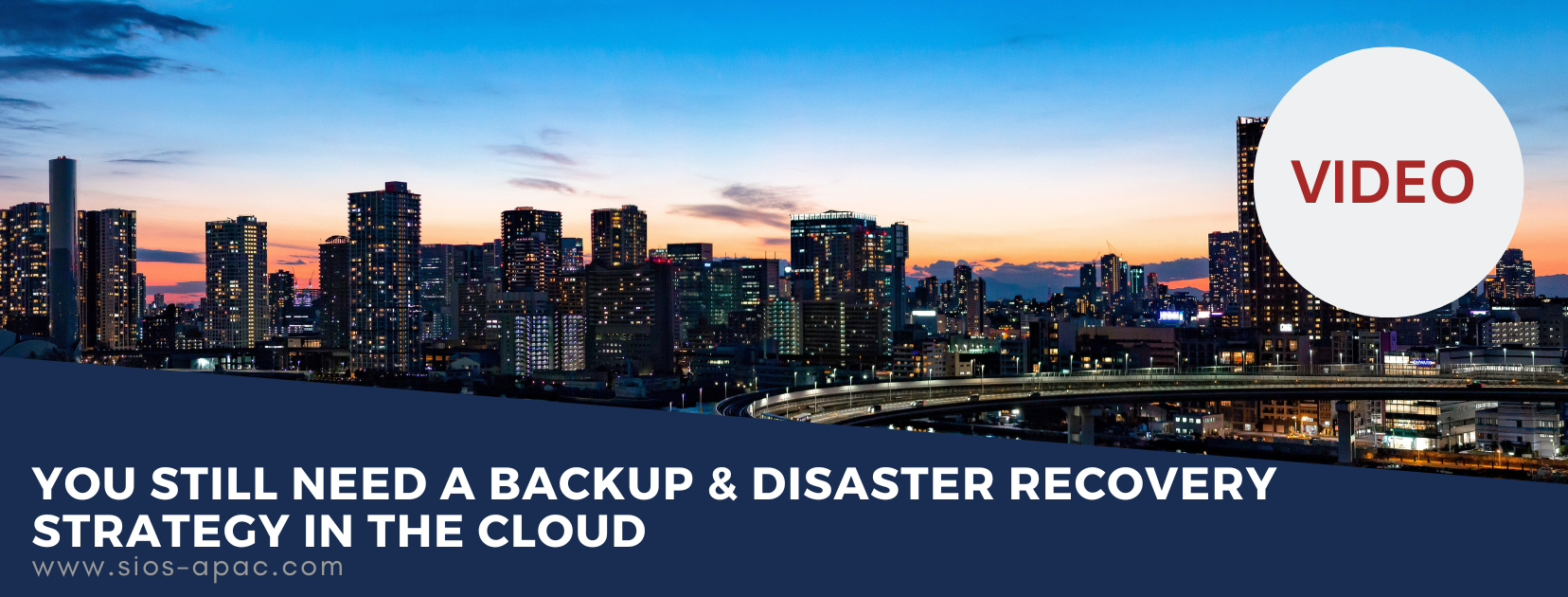Date: November 26, 2023
Tags: Cloud, disaster recovery, High Availability and DR
Video: You Still Need A Backup & Disaster Recovery Strategy In The Cloud
In this video, Dave Bermingham, Director of Customer Success at SIOS Technology, talks about high availability in the cloud and how companies can best prepare themselves for failures.
How do you define high availability in the cloud?
- High availability and disaster recovery are key aspects of system management that aim to ensure services are not disrupted and data is not lost in the event of a problem.
- HA is achieved through redundancy and failover mechanisms with services running on multiple instances in the cloud. DR typically involves backing up systems and data, with plans in place to restore systems from the backups in the case of a disaster.
- While cloud providers do provide some tooling around high availability and disaster recovery, the onus ultimately falls on the customer to utilize these tools in their architecture.
Misconceptions about moving to cloud:
- Many people moving to the cloud tend to think you do not need to do anything to ensure resiliency or backups. Yet they need to be able to keep their data in sync ensuring there is no data loss across multiple cloud zones. However, you still need a robust backup and disaster recovery strategy in case of major outages.
- SIOS Technology can do real-time asynchronous replication between regions, giving customers a lower RPO.
What are the differences between HA/DR on-prem compared to in the cloud?
- Cloud platforms provide native tools and services for HA and DR, which can make it easier to implement in the cloud compared to on-prem since all the tools, utilities, and infrastructure are already in place.
- In the cloud, the cloud provider takes care of availability for things like hardware redundancy, network redundancy, and storage redundancy but the customer is responsible for everything else.
- This is where SIOS LifeKeeper comes in, monitoring the application tier and enabling you to take recovery actions. SIOS DataKeeper uses synchronized block-level replication or asynchronized between regions, and even enables a hybrid-cloud model.
Challenges for HA/DR in the cloud:
- Understanding and properly using all the high availability and disaster recovery tools is a key challenge. Each cloud vendor has its own unique set of tools and services, making it even more challenging in a multi-cloud environment.
- Data sovereignty and compliance is another key consideration since some regions have specific laws on where your data can be stored and transferred.
- Managing costs on an ongoing basis can be another challenge.
How does SIOS Technology help companies migrating to the cloud?
- SIOS DataKeeper moves data to the cloud, doing real-time block level replication from one server to another, from on-prem to the cloud, or between instances in different availability zones in the same region or even between regions with our asynchronous replication.
- SIOS helps manage the egress data cost by enabling data compression before the data leaves the region or availability zone achieving 3:1 or even 5:1 compression ratios.
Advice for customers:
- Understanding your needs is key, since not every application or service may require the same level of availability. It is crucial to prioritize according to the business needs.
- You need to assume that every component can fail and design the architecture so that any failures have a minimal impact on the overall service availability.
- Utilize automation where possible as it can significantly reduce the risk of human error and increase the efficiency and speed up recovery time.
- Make sure you are regularly testing to ensure your plan works as expected.
